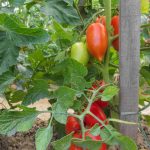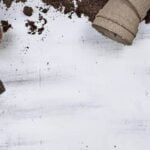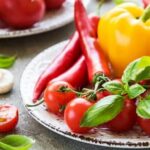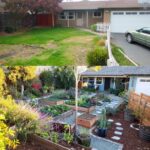Are you looking to start your own vegetable garden? One of the most important steps in this process is choosing the right vegetable seeds for gardening. Whether you are a beginner or an experienced gardener, understanding the benefits of growing your own vegetables can be an excellent motivation. From saving money on groceries to enjoying fresh and nutritious produce, there are numerous advantages to cultivating your own edible plants.
When it comes to selecting the best vegetable seeds for your garden, it’s essential to consider your climate and soil conditions. Understanding these factors will help you choose the right varieties that will thrive in your specific environment. In this article, we will explore some top tips for choosing vegetable seeds that are well-suited for your gardening needs.
In addition to providing fresh and healthy produce, growing your own vegetables can also be a rewarding and fulfilling experience. Whether you have a spacious backyard or just a small balcony, there are plenty of options for growing a variety of vegetables from seed. So, let’s dive into the world of vegetable gardening and discover the many benefits that come with it.
Choosing the Right Vegetable Seeds
When it comes to choosing the right vegetable seeds for gardening, understanding your climate and soil is essential for a successful and thriving garden. Different vegetables have different requirements when it comes to temperature, sunlight, and soil type. Understanding these factors will help you select the best vegetable seeds for your specific growing conditions.
To make the process easier, here are some tips on how to choose the right vegetable seeds based on your climate and soil:
- Research Your Hardiness Zone: Before choosing vegetable seeds, it’s important to know your hardiness zone. This will help you understand the average minimum winter temperature in your area and select vegetables that are suitable for your climate.
- Assess Your Soil Type: Some vegetables thrive in well-drained, sandy soil, while others prefer rich, loamy soil. Understanding your soil type will help you choose vegetable seeds that are well-suited to your garden’s conditions.
- Consider Sunlight Exposure: Different vegetables have varying sunlight requirements. Some need full sun, while others can tolerate partial shade. Evaluate the sunlight patterns in your garden to determine which vegetable seeds will thrive best.
By taking these factors into consideration, you can make informed decisions when choosing vegetable seeds for gardening that are well-suited to your specific climate and soil conditions. This will increase the likelihood of a successful harvest and a bountiful garden.
Top 10 Vegetable Seeds for Beginners
When it comes to starting a vegetable garden, choosing the right seeds is crucial for beginners. Not all vegetables are easy to grow, and some require more maintenance than others. Here are the top 10 vegetable seeds for beginners that are easy to grow and low maintenance:
1. Tomatoes: One of the most popular choices for beginner gardeners, tomatoes are relatively easy to grow and can be grown in containers or in the ground.
2. Peppers: Whether you choose bell peppers or spicy chili peppers, they are a great option for beginners due to their resistance to pests and diseases.
3. Green Beans: These fast-growing vegetables can be easily planted directly in the ground and require minimal care as long as they have plenty of sunlight.
4. Zucchini: A prolific producer, zucchini plants are low maintenance and produce a bountiful harvest throughout the summer months.
5. Radishes: These root vegetables are one of the fastest growing options, making them perfect for beginners who want to see results quickly.
6. Lettuce: With many varieties available, lettuce is an easy-to-grow vegetable that can be harvested continuously by picking outer leaves.
7. Cucumbers: As long as they have support for climbing, cucumbers are low maintenance and produce an abundance of crisp and refreshing vegetables.
8. Carrots: While they may take a bit longer to mature, carrots are relatively low maintenance and can be grown in containers or directly in the ground.
9. Spinach: This leafy green is easy to grow and can withstand colder temperatures, making it a great option for beginner gardeners.
10. Basil: Although not a vegetable, basil is an herb that is extremely easy to grow from seed and adds delicious flavor to many dishes.
| Vegetable | Level of Maintenance |
|---|---|
| Tomatoes | Low |
| Peppers | Low |
| Green Beans | Low |
| Zucchini | Low |
Choosing any of these top 10 vegetable seeds will give beginners a great start in their gardening journey. With proper care and attention to their specific needs, these vegetables will provide a bountiful harvest while allowing new gardeners to gain confidence in their gardening skills.
Organic vs Non-Organic Vegetable Seeds
When it comes to choosing vegetable seeds for gardening, one of the decisions you’ll need to make is whether to use organic or non-organic seeds. Both options have their own set of benefits and considerations, so it’s important to understand the differences between the two.
Organic vegetable seeds are produced without the use of synthetic pesticides, fertilizers, or other chemicals. They are grown using natural methods that promote soil health and biodiversity. Choosing organic seeds for your garden means supporting sustainable and environmentally-friendly agricultural practices. Additionally, organic vegetables are often considered to be healthier and more nutritious because they are free from harmful chemicals.
On the other hand, non-organic vegetable seeds are typically produced using conventional farming methods that may involve the use of synthetic chemicals. While non-organic seeds may be more cost-effective and easier to find, they come with potential environmental and health concerns due to the use of chemical inputs in their production.
If you’re looking to create a garden that aligns with your values of sustainability and environmental consciousness, choosing organic vegetable seeds may be the best option for you. However, if cost and accessibility are major factors for you, non-organic seeds might be a more suitable choice.
Ultimately, whether you choose organic or non-organic vegetable seeds for your garden will depend on your personal preferences and priorities as a gardener. Taking the time to weigh the pros and cons of each option will help you make an informed decision that best fits your gardening needs.
- Considerations when choosing between organic and non-organic vegetable seeds
- Benefits of using organic vegetable seeds for gardening
- Potential drawbacks of using non-organic vegetable seeds
Tips for Starting Vegetable Seeds Indoors
Starting vegetable seeds indoors is a great way to get a head start on your garden and ensure a successful germination. By starting seeds indoors, you can control the growing environment and protect the young plants from pests and harsh weather conditions. Here are some essential tips to help you successfully start your vegetable seeds indoors.
Choosing the Right Containers
When starting vegetable seeds indoors, it’s important to choose the right containers for planting. Use seed trays or pots with drainage holes to prevent waterlogged soil, which can lead to root rot. Consider using biodegradable peat pots or cell packs that can be planted directly into the ground once the seedlings are ready to be transplanted outdoors.
Providing Adequate Light and Warmth
Ensuring that your indoor seedlings receive adequate light and warmth is crucial for successful germination. Place your seed trays or pots in a bright location, such as a sunny windowsill or under grow lights. Keep the room temperature between 65-75°F (18-24°C) to promote healthy growth and development of the young plants.
Watering and Fertilizing Carefully
Overwatering can be detrimental to young seedlings, so it’s important to water them carefully. Use a spray bottle or fine mist sprayer to avoid disrupting the soil and roots. Once the seedlings have developed their first true leaves, you can begin fertilizing them with a diluted organic fertilizer to provide essential nutrients for healthy growth.
By following these tips for starting vegetable seeds indoors, you can ensure a successful germination and give your garden a head start on producing an abundant harvest of homegrown vegetables. Remember to keep track of the specific requirements of each type of vegetable seeds for gardening, as different plants may have unique needs during their germination and early growth stages.
Planting and Caring for Vegetable Seeds
When it comes to planting and caring for vegetable seeds, there are essential steps that every gardener should follow to ensure a thriving garden. First, it is important to prepare the soil properly. This includes removing any debris, weeds, or rocks from the planting area and ensuring that the soil is well-draining and nutrient-rich. Testing the soil pH can also help determine if any amendments are needed to create an ideal environment for seedlings.
Once the soil is prepared, planting the vegetable seeds at the correct depth is crucial for successful growth. Different types of vegetables require different planting depths, so it’s essential to follow the instructions on the seed packet. Additionally, spacing between seeds is important to prevent overcrowding and allow each plant to receive adequate sunlight and nutrients.
Caring for vegetable seeds involves regular watering, especially during dry periods, as well as providing support for plants that require it, such as tomato plants or vining vegetables like cucumber or squash. Mulching around plants can help retain moisture in the soil and suppress weeds. Regularly inspecting plants for pests or disease and taking appropriate action is also essential to ensure a healthy garden.
| Vegetable | Recommended Planting Depth (Inches) |
|---|---|
| Carrots | 1/4 – 1/2 inch |
| Tomatoes | 1/4 inch |
| Lettuce | 1/8 inch |
Harvesting and Storing Vegetable Seeds
Once your vegetables have fully grown and you’ve enjoyed a successful harvest, it’s important to consider the next steps in maximizing the benefits of your hard work. Harvesting and storing vegetable seeds will not only allow you to continue growing your favorite produce in the future but also ensure that your garden’s bounty lasts as long as possible. Here are some essential tips for successfully harvesting and storing vegetable seeds.
When to Harvest
Before you can store vegetable seeds, you’ll need to know when they are ready for harvest. It’s important to allow the vegetables to fully mature on the plant before collecting their seeds. For example, tomato seeds should be harvested when the fruit is ripe and slightly overripe.
On the other hand, lettuce seeds are ready for harvest when the flowers start turning into fluffy white seed heads. Each type of vegetable will have its own specific signs of readiness for seed collection, so it’s crucial to research each variety thoroughly.
Seed Harvesting Techniques
The method of collecting vegetable seeds varies depending on the type of plant. Some vegetables produce seeds within their fruit (like tomatoes), while others produce seeds inside pods (like peas). For instance, pepper seeds can be collected by cutting open a ripe pepper, scraping out the seeds, and allowing them to dry on a paper towel. It’s important to ensure that the collected seeds are fully dry before storage to prevent mold and extend their shelf life.
Proper Seed Storage
After harvesting your vegetable seeds, proper storage is crucial for maintaining their viability. The key factors in seed storage are temperature, moisture, and air circulation. Most vegetable seeds thrive in cool, dark environments with low humidity levels. Airtight containers such as glass jars or plastic bags can help protect the seeds from moisture and pests while maintaining an ideal climate for long-term viability.
By following these essential guidelines for harvesting and storing vegetable seeds, you can ensure a sustainable supply of homegrown produce year after year while maximizing the shelf life of your garden’s bounty.
Conclusion
In conclusion, the decision to grow your own vegetables from seed is one that comes with a multitude of rewards. Not only does it provide the satisfaction of nurturing and harvesting your own produce, but it also offers numerous health and environmental benefits. By choosing the right vegetable seeds suited for your climate and soil, you can embark on a fulfilling gardening journey that promotes self-sustainability and reduces your ecological footprint.
When it comes to selecting follow noopener”>vegetable seeds for gardening, it’s essential to consider whether you want to opt for organic or non-organic options. While both have their advantages, organic vegetable seeds are often favored for their environmentally-friendly cultivation methods and chemical-free produce. Allowing yourself to explore different varieties while keeping in mind the specific needs of each plant can lead to a diverse and bountiful harvest.
Starting vegetable seeds indoors requires patience and attention to detail, but with the right techniques, you can ensure successful germination. From planting and caring for your vegetable seeds to harvesting and storing them, each step in the process plays a crucial role in maintaining a thriving garden. By embracing the rewards of growing your own vegetables from seed, you’re not only contributing to a healthier lifestyle for yourself but also making a positive impact within your community and beyond.
Frequently Asked Questions
What Is the Easiest Vegetable Seed to Grow?
The easiest vegetable seed to grow is often considered to be the pea. Peas are relatively low-maintenance, have a short growing season, and can even tolerate cooler temperatures, making them ideal for beginner gardeners.
What Is the Quickest Vegetable to Grow From Seed?
When it comes to the quickest vegetable to grow from seed, radishes are at the top of the list. Radishes can be ready for harvest in just three to four weeks after planting, making them a great choice for those looking for fast results.
What Month Do You Plant Vegetable Seeds?
The best month to plant vegetable seeds can vary depending on the specific type of vegetable and your location. In general, it is recommended to start planting seeds indoors in late winter or early spring before transplanting them outdoors once the risk of frost has passed.
However, certain vegetables may be better suited for different times of the year based on their growing preferences and your local climate.

If you’re looking to get into vegetable gardening, or are just looking for some tips on how to make your current garden better, then you’ve come to the right place! My name is Ethel and I have been gardening for years. In this blog, I’m going to share with you some of my best tips on how to create a successful vegetable garden.





